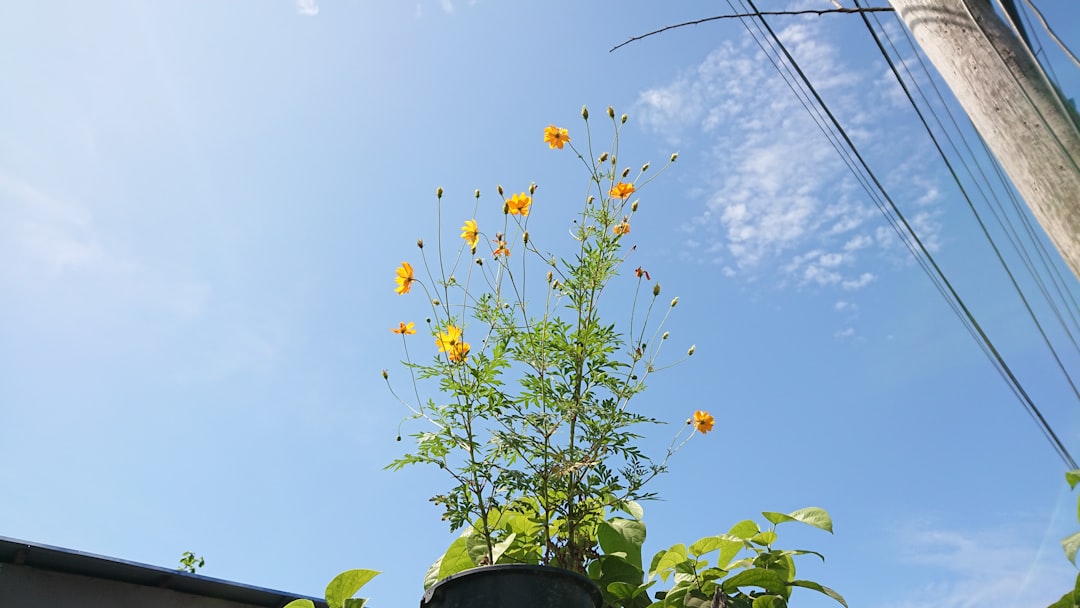The Secret to a Thriving Poinsettia Beyond Christmas

Houseplants have long been a source of joy and tranquility in our homes, adding a touch of nature to our living spaces. Among these beloved green companions, the poinsettia stands out as a symbol of the holiday season, with its vibrant red and green foliage. But did you know that you can plant a poinsettia outside and keep it alive until the next Christmas? In this article, we'll explore some simple tips to help you achieve just that.
First, let's understand the poinsettia's natural habitat. Poinsettias are native to Mexico, where they thrive in warm, sunny climates. When you bring a poinsettia home from the store, it's important to remember that it's been grown in a controlled environment. To successfully plant it outside, you'll need to gradually acclimate it to the outdoor conditions. This process, known as hardening off, involves exposing the plant to the outdoors for short periods each day, gradually increasing the time over a week or two.
Once your poinsettia is ready to be planted outside, choose the right location. Poinsettias prefer well - drained soil and plenty of sunlight, but they can also tolerate some light shade. A spot that gets at least six hours of sunlight a day is ideal. Before planting, prepare the soil by adding organic matter such as compost or aged manure. This will help improve the soil's fertility and drainage.
Dig a hole that is slightly larger than the root ball of your poinsettia. Gently remove the plant from its container and place it in the hole. Make sure the top of the root ball is level with the surrounding soil. Backfill the hole with soil and gently firm it around the base of the plant. Water the poinsettia thoroughly after planting to help settle the soil around the roots.
Watering is a crucial aspect of caring for your outdoor poinsettia. While poinsettias don't like to sit in waterlogged soil, they also need consistent moisture. Check the soil regularly by sticking your finger about an inch into the soil. If it feels dry, it's time to water. During hot, dry weather, you may need to water more frequently. However, be careful not to over - water, as this can lead to root rot.
Fertilizing your poinsettia is also important for its growth and health. Use a balanced, slow - release fertilizer according to the package instructions. Apply the fertilizer in the spring and summer, when the plant is actively growing. Avoid fertilizing in the fall and winter, as this can interfere with the plant's natural dormancy cycle.
Pruning is another essential part of poinsettia care. In the spring, after the danger of frost has passed, prune your poinsettia back to about six inches. This will encourage new growth and a bushier shape. Throughout the summer, you can also pinch back the tips of the branches to promote more branching and a fuller plant.
As the days start to get shorter in the fall, poinsettias need a specific light and dark cycle to develop their colorful bracts. To ensure that your poinsettia will be in full bloom for Christmas, it needs at least 14 hours of complete darkness each day for about 6 - 8 weeks starting in early October. You can achieve this by covering the plant with a light - proof cloth or placing it in a dark closet every evening and uncovering it in the morning.
Protecting your poinsettia from pests and diseases is also vital. Common pests that can affect poinsettias include aphids, whiteflies, and spider mites. Regularly inspect your plant for signs of pests, such as yellowing leaves or sticky residue. If you notice any pests, you can use an insecticidal soap or neem oil to treat the problem. Diseases such as powdery mildew and root rot can also occur, especially if the plant is over - watered or in a poorly ventilated area. Make sure to provide good air circulation around the plant and avoid over - watering to prevent these issues.
In conclusion, with a little bit of knowledge and care, you can plant a poinsettia outside and enjoy its beauty year after year. By following these simple tips on acclimation, planting, watering, fertilizing, pruning, light management, and pest control, you'll be well on your way to having a healthy and vibrant poinsettia that will brighten up your holiday season for many Christmases to come.